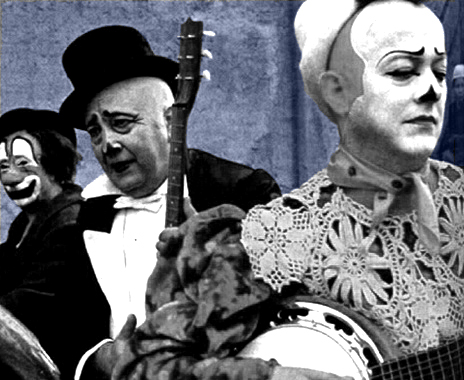
There’s something striking, and potentially even new, about the constant oscillation between third-person and first-person narration—between the qualifiedly omniscient “he” and the tentative, monological “I”—running through Stephen Dixon’s “Talk”. For example: “The classical music radio station was on when I shaved and exercised and after he was done exercising he turned off the radio.” Or: “But that’s the kind of day it’s been. Where he hasn’t as yet said a word to anyone. Not one, and it makes me feel kind of strange or odd.”
On the one hand, one might be tempted to read this oscillation psychologically, as a kind of fictional representation of the choreography of avoidance and dissociation. In this understanding, these strange shifts of perspective would betoken the protagonist’s own attempt to distance himself from his (ostensibly untenable) suffering—e.g., something to the effect of, “This pain is too much to claim as my own, and yet so monstrously a part of myself that, in order to disavow it, I must disavow myself as well.” And so the protagonist regards himself as a “he” (or, essentially, an “it”), keeping his pain at arm’s length.
On the other hand, one might understand “Talk,” and the perspectival shuttling that characterizes it, as a critique of third-person narration as such. In “Talk,” “he” can transform into “I” (and back again) with such apparent ease only because this “transformation” is, in the end, merely apparent: for behind every omniscient, third-person narrator is the scrambled, autobiographical “I” of its author, and each instance of a “God’s-eye” perspective in literary work is a smoke screen concealing both (a) the fundamental artifice of the fictive act, whereby some higher truth is claimed to arise from the (partial, biased, incomplete) perspective of its individual author; and (b) the impotent yearning for precisely such a “God’s-eye” view to exist in reality. For in reality (the argument continues), there is just a cacophony of isolated, dangling subjectivities, and in literature, the only authentic verisimilitude derives not from an “accurate” record of the thoughts and desires of others, but rather an inward-focused attention to the fractured dynamics of the self.
But this movement between narrative registers is also in some ways reminiscent of the sudden, perspectival “jump cuts” characteristic of the dreamscape, wherein one moment the dreamer is in the thick of the action, and the next moment is suddenly as if “out of body,” watching the action (and the self) unfold from somewhere off to the side. In the dreamscape, neither the “he” nor the “I” is privileged—no one perspective is the default setting of subjective experience. Rather, it is this fluidity of perspective that makes the dream space so immersive—and so encompassing. In waking life, self-construction is a controlled, curatorial act; we serve as our own lock, laboring with anxious vigilance to ensure that we are not overrun. Not so in the dream world: as we’re tossed back and forth between “he” and “I”, the lock breaks—things rush in. It is only in this constant back and forth, in inhabiting this relational tension, that we are, despite ourselves, properly opened to what’s outside our skin—to what we can, in truth, abide.

